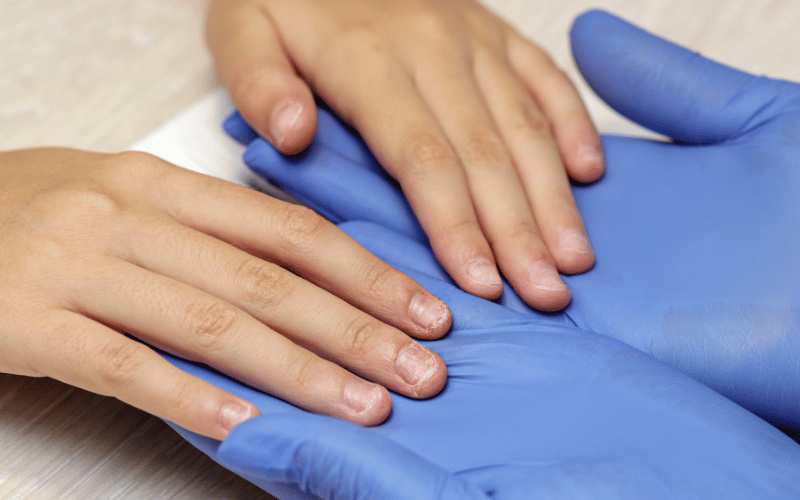8. Nail Nuances: Lichen Planus’s Fingertip Foray

The realm of LP isn’t restricted to skin and mucous membranes. The nails, often overlooked, are prime targets too. It’s a bit of a silent invader in this regard, gradually altering the nail’s architecture. At first glance, one might dismiss nail involvement as mere cosmetic. But there’s more than meets the eye.
Lichen planus of the nails often begins subtly. Minute ridges or grooves start appearing on the nail plate. Over time, these grooves deepen, leading to a rough, almost sandpaper-like texture. In some severe cases, the nail can even shed or become entirely eroded. That’s right, an entire nail, vanishing.
The mechanism behind this? LP causes inflammation of the nail matrix. That’s the part under your cuticle responsible for nail growth. Once inflamed, the matrix’s ability to produce a smooth nail plate is compromised. Over time, as the inflammation persists, the nail matrix can get scarred, leading to permanent nail loss.
Now, for many, nails play a significant role in personal aesthetics. LP-induced nail changes can, therefore, be emotionally distressing. Each altered nail is a reminder of the condition, a persistent, visible signature of LP. Some individuals go to great lengths, seeking cosmetic remedies, only to find the problem lies much deeper.
But here’s a glimmer of hope. Treatment, especially when initiated early, can halt or even reverse some of these changes. While the path to recovery can be long, and sometimes riddled with relapses, understanding the nuanced manifestations of LP can be the first step in reclaiming one’s nails. (8)